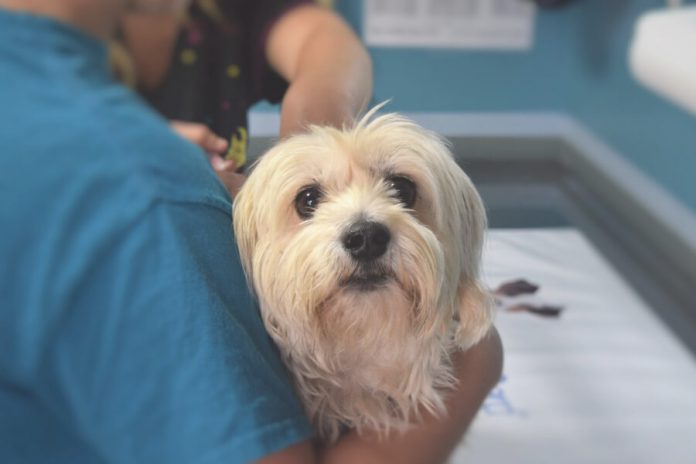Find creative ways to handle stress with a companion who will always be there for you. Your dog.
Having your dog be your best friend in times of stress
As many dog owners already know, taking the time to bond with your furry friend can turn your dog into a close companion for life. That is especially true when circumstances make it harder to maintain close ties with family and friends. Relocating to a new area, retiring from work, or spending time in isolation during a pandemic, for example, can make your relationship with your dog even more important.
Dogs have a unique ability to provide their owners with an endless amount of love and emotional support, especially during times of great stress. They provide an outlet for fun and play, while bringing lots of laughter and levity into the home to keep you in the present moment rather than obsessing on an uncertain future. In fact, studies have shown that dogs provide comfort that is at least equal to that of a close friend.
A recent study conducted at the University of Utah found:
The presence of a companion dog is associated with lower cardiovascular responses during stressors, even lower than that of having a close friend present.
Being wholly satisfied and attached to your dog is associated with an owner’s increased oxytocin levels in the brain, compared to those without dogs.
Companion dogs make significant contributions in aiding social welfare situations, as therapy dogs have been shown to alleviate pain and distress in chronic pain patients.
Dogs play an important role in psychiatric settings, being successfully used with patients struggling with depression, loneliness, addiction, schizophrenia, and phobias.
When examining emotional responses, participants with their dog present have significantly lowered feelings of distress and nervousness.
Overall, interactions with their dog make people happier, less lonely, and more relaxed, secure, and affectionate.
Fun and stimulating activities to do with your dog
Being creative and finding new activities to do with your dog are essential for a happy and emotionally content home companion. Some activities could include:
Taking long walks and hikes. Going on a long walk with your dog is a great way to not only explore new areas, but also to get much needed exercise for yourself—and it makes a welcome break from the boring repetition of the gym.
Making homemade dog treats. This allows you to not only to spend quality time with your dog, but also cultivate your culinary skills, something which can help to improve your own diet.
Training. Spending more time at home means you have more time to train and improve your dog’s behavior. This not only provides mental stimulation for your dog, but the benefits of this will last for the rest of your dog’s life.
Practicing doggie yoga. Finding Zen has never been more important than in these difficult times. Incorporating yoga and meditation into daily playtime with your dog can help you de-stress and spend more quality time with your furry companion.
Trying a “stairway dash”. If you feel that walks or games of “fetch” are getting boring, this is a sure way to not only tucker out your dog but also leave you feeling fully exercised as well. Challenging your dog to a race up a flight of stairs is a fun way to physically engage your dog at home.
Building an obstacle course. Setting up an obstacle course is a great way to get creative with your dog. Dig out the hula hoops, jump ropes, and basketballs that are buried in your garage and lay out a course for your dog to navigate. Be sure to reward your dog with lots of encouragement and treats afterwards.
Playing tug-of-war. Most dogs are thrilled at the prospect of a great game of tug-of-war. Depending on how big or how small your dog is, take an old hand towel, washcloth, or bath towel and use it as a substitute for a braided rope toy.
Just relaxing. You might be guilty of over-indulging in this particular activity, but nevertheless, after a long day of new tricks and new adventures, snuggling up together on the couch while watching a movie is the perfect way to cap off a busy day.
Teaching your dog new tricks
Teaching your dog new tricks is a powerful and fun way to form a closer bond. These new tricks can also improve overall obedience and manners, while increasing your dog’s flexibility, balance, and concentration. Some easy ones to start could include:
Shake Hands. Teach your dog to shake your hand. First, present a handful of treats in front of your dog, they will naturally be inclined to paw at your hand, and as they continue to paw, begin to use the command “shake”.
Paws Up Trick. Teach your dog to put their front paws up onto a high object, such as a step stool, small chair, or tree stump. For this, have the object of your choice next to you and a treat in your hand. Move your hand slowly so your dog follows the treat and takes a step towards the object. Once they’ve done this, raise your hand slightly to encourage your dog to raise their front paws up and onto the object. Once their feet are up, reward them. Repeat this until the movement is fluid, and say, ‘paws up’ while gesturing in the exact same way.
Teach your dog to crawl towards you.
First, have your dog assume a lying down position. Then, have a few treats in your closed hand, but place it close to your dog’s nose so they can smell them. Bring your hand back while keeping it slightly lower than your dog’s nose to prevent them from getting up. As your dog shuffles forward, reward them. Be sure to keep rewarding each little bit of shuffling until your dog is confident in this movement. Once they are able to shuffle forwards a meter or so, start adding verbal cues such as ‘crawl’ while repeating the movement with your hand.
Once you and your dog are comfortable with these, you can move on to more difficult tricks like standing on their hind legs, teaching your dog to wave, or even having your dog jump up onto your back! For links to more dog tricks, see the “Get more help” section below.
Be a best friend to your dog
Remember that with any relationship you get in what you put out. Dogs are no different in that respect; so be sure to respect and observe your dog’s needs. In turn, they will be more willing to make you their best friend. Ways in which to do this include:
Regular grooming. Be sure to wash your dog regularly and, depending on fur length, brush their hair at least once a week. If it’s a particularly rainy season and your dog’s outside playtime gets them dirty, be sure to rinse them immediately afterwards. Remember, only use shampoo and other products specifically designed for use on dogs.
Respecting your dog’s personal space. A dog, just like a human, needs time to themselves to rest and reset. Allowing your dog this time and space is important to their well-being and functionality as a home companion. Try to better understand their body language so you know when your dog might be feeling the need for alone time.
Taking your dog to the vet. Making sure your dog is healthy and up-to-date on vaccinations is a sure way to keep your dog happy. This also relates to reading your dog’s body language; if they are displaying signs of discomfort, be sure to get them in to see a veterinarian.
Providing healthy nourishment. Always make sure that your dog has fresh drinking water available to them at all times. Let them see you fill their water and food bowl, as they will come to know you as their primary provider. And being consistent with portion size and feeding times is a good way to control your dog’s weight and will ultimately make them healthier and happier.
Creating a safe home environment. Indoors, be sure to keep household cleaning products, medications, or other possible poisons safely out of reach. Heavy objects should be stowed safely around the house, so they don’t fall and injure your dog. Outside, make sure your backyard is fenced in and you keep your dog away from trafficked streets.
Health benefits of dogs
Many of us have experienced an increase in stress, depression, and anxiety in recent times. Developing a closer relationship with your dog will not only help you physically, but will help you mentally cope with the stress created by the pandemic and its aftermath. Your dog can help to:
Lower levels of depression. Pet owners of all kinds are shown to suffer less from depression.
Ease anxiety. Playing with your
Reduce stress. Petting your dog can reduce stress, lower blood pressure, and calm your heart rate.
Relieve symptoms of PTSD. By lifting your mood and helping lower stress, dogs bring out feelings of love that can positively combat Post-Traumatic Stress Disorder (PTSD) symptoms.
Add companionship. Companion dogs provide a source of friendship and company, soothing the physical and mental strain of loneliness.
































